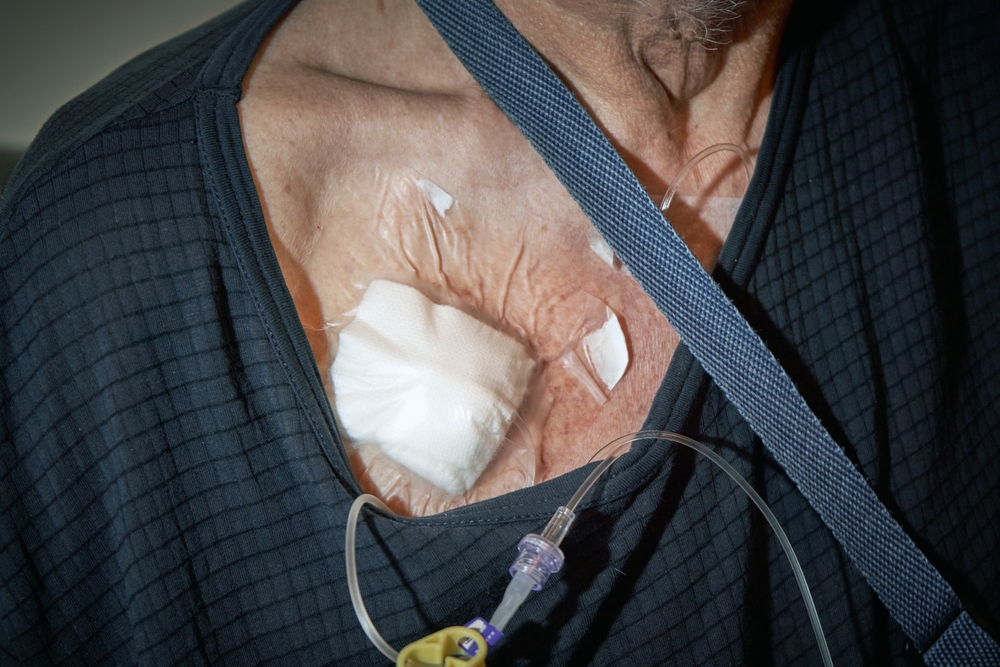In recent years, there has been a significant increase in the number of product liability lawsuits related to Bard implantable port devices, commonly known as port-a-caths. Port-a-caths, manufactured by companies like Becton, Dickinson and Company, C.R. Bard, and Bard Access Systems, are designed to facilitate the delivery of medication and fluids to patients through an implantable port. However, numerous patients have reported serious injuries and complications after using these devices, leading to a surge in product liability lawsuits. One of the most recent port-a-cath lawsuits was filed by an Illinois woman who says her Bard PowerPort MRI Implantable Port fractured, sending fragments of the device to her heart and causing a pulmonary embolism.
Understanding How Port-a-Caths Work
Port-a-caths, also known as implantable ports, are medical devices that are surgically implanted beneath the skin, typically in the chest or arm. These devices consist of a small reservoir, or port, connected to a catheter, which is a thin tube that is inserted into a large vein. The purpose of a port-a-cath is to provide a convenient and reliable access point for healthcare providers to administer medications, chemotherapy, and other treatments directly into the bloodstream.
Popular brands of implantable ports include Bard PowerPort, PowerPort ClearVUE, and PowerPort MRI. These devices are often marketed as offering superior durability and higher injection pressure capabilities compared to other port-a-cath options. However, it is the very design and function of these devices that have come under scrutiny in recent lawsuits.
The Rising Tide of Bard Implantable Port Lawsuits
Patients who have experienced complications and injuries after using Bard implantable port devices have filed product liability lawsuits against the manufacturers. These lawsuits allege that the devices are defective and pose serious risks to patients’ health and well-being. One such lawsuit was filed last week by Crystal Sussen in the U.S. District Court for the Southern District of Illinois, where she seeks damages from Becton, Dickinson and Company, C.R. Bard, Inc., and Bard Access Systems.
Sussen claims in her lawsuit that the manufacturers released a flawed port system that endangers the lives of patients. According to Sussen’s complaint, she received a Bard PowerPort MRI Implantable Port in June 2011 to facilitate her malignant melanoma treatment. Just six months later, she suffered serious complications when the implantable port catheter fractured, sending fragments of the device into her bloodstream and to her heart. The port was removed and replaced with another PowerPort device in November 2011. Doctors discovered in October 2015 that the replacement device was not functioning and it was surgically removed.
Similar product liability lawsuits have been filed by other individuals who have suffered injuries such as catheter fractures, device migration, infections, and blood clots. These injuries can have severe consequences for affected individuals, possibly including pulmonary embolism, cardiac punctures, organ damage, and even death. The allegations made in these lawsuits suggest that the manufacturers were aware of the risks associated with their devices but failed to adequately warn patients and healthcare providers.
Research Studies Illustrate Risks of Port-a-Caths
Research studies have provided further evidence linking the use of implantable port devices to injuries in patients. In one study published in November 2009, researchers found that imperfections on the surface of intravascular catheters may lead to an increased risk of bacterial growth, which can cause infection and thrombosis. In a case report published in September 2015, a five-year-old boy suffered complications involving a central line catheter that disconnected from the injection port and migrated into his heart.
These studies shed light on the potential dangers associated with port-a-cath fractures, migration, and other complications. When the catheter fractures, small fragments can migrate throughout the body, causing internal damage and requiring surgical intervention for removal. Catheter migration can lead to device failure and other complications. Additionally, the design of Bard implantable port devices has been identified as a contributing factor to the increased risk of infections. Over time, the catheter can develop small cracks that allow bacteria and other pathogens to enter the body, potentially leading to serious infections and other health issues.
The Consolidation of Bard Port-a-Cath Lawsuits
Given the common issues raised in the product liability complaints filed against Bard, the U.S. Judicial Panel on Multidistrict Litigation decided to consolidate all Bard PowerPort lawsuits in the District of Arizona. U.S. District Judge David Campbell has been assigned to oversee the coordinated pretrial procedures. This consolidation aims to streamline the litigation process, avoid conflicting rulings from different judges, and serve the convenience of all parties involved.
As the litigation progresses, a small group of representative cases will be selected for early trial dates. These trials will provide valuable insights into how juries may respond to the evidence and testimony presented. The outcomes of these trials may influence the negotiation of Bard PowerPort settlements. However, if settlements are not reached, individual cases may be remanded back to their respective U.S. District Courts for separate trial dates.
Port-a-Cath Lawsuit Information
Migration of A Port-A-Cath in to the Heart, Journal of Cardiology & Current Research
Complications of central venous port systems: a pictorial review, Insights Imaging
Outcomes following port-a-catheter placement in the Medicare population, Surgery Open Science

